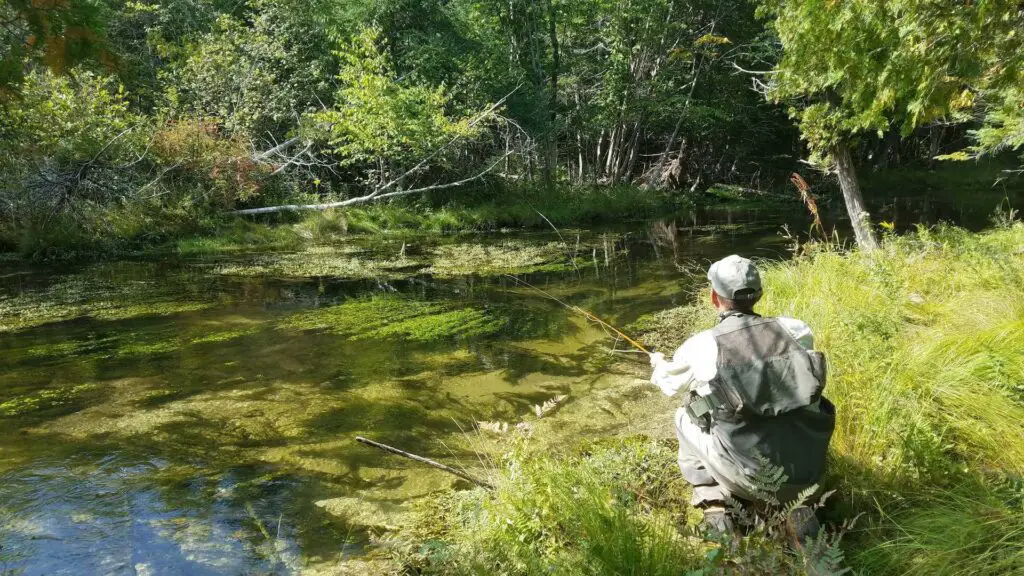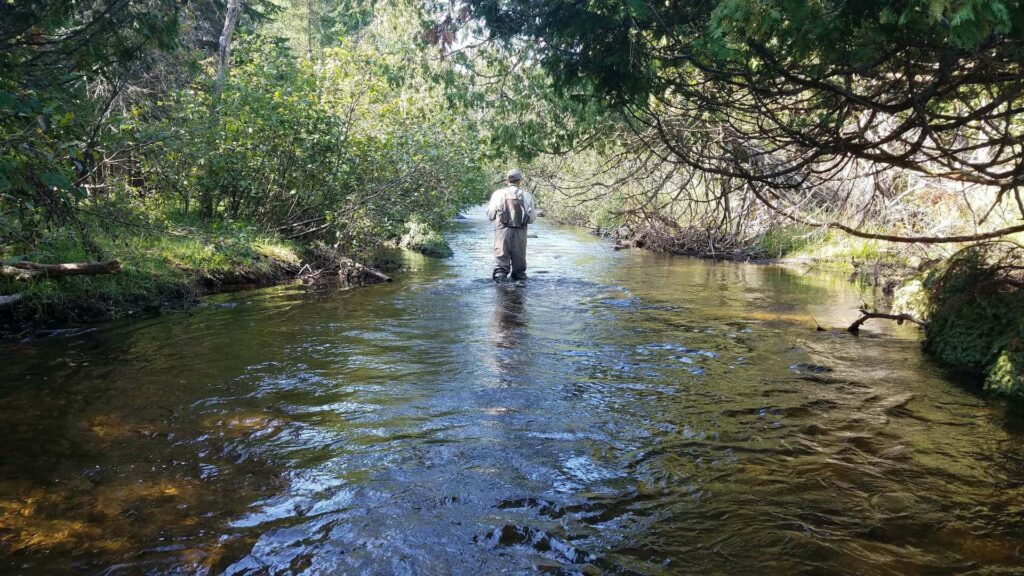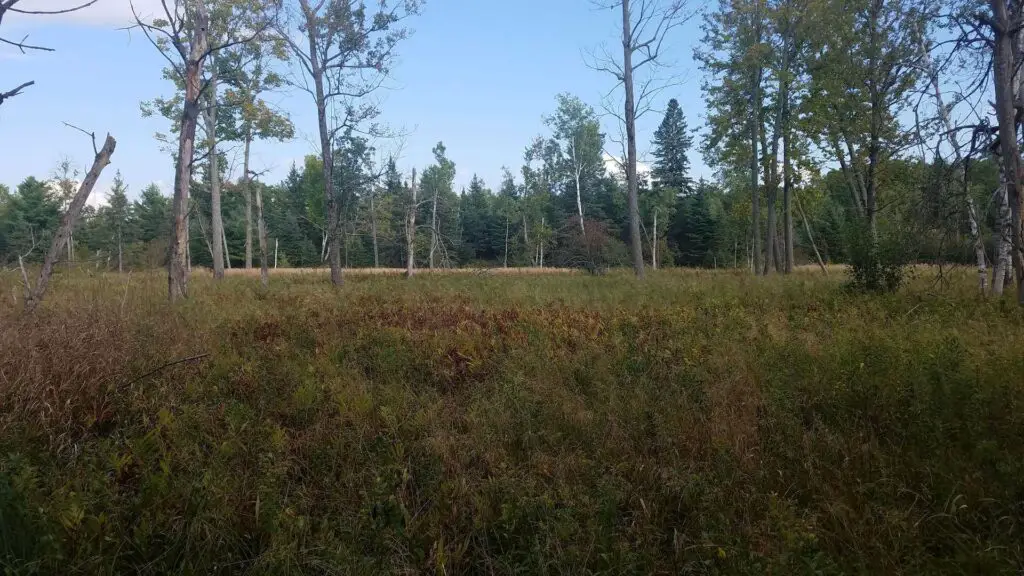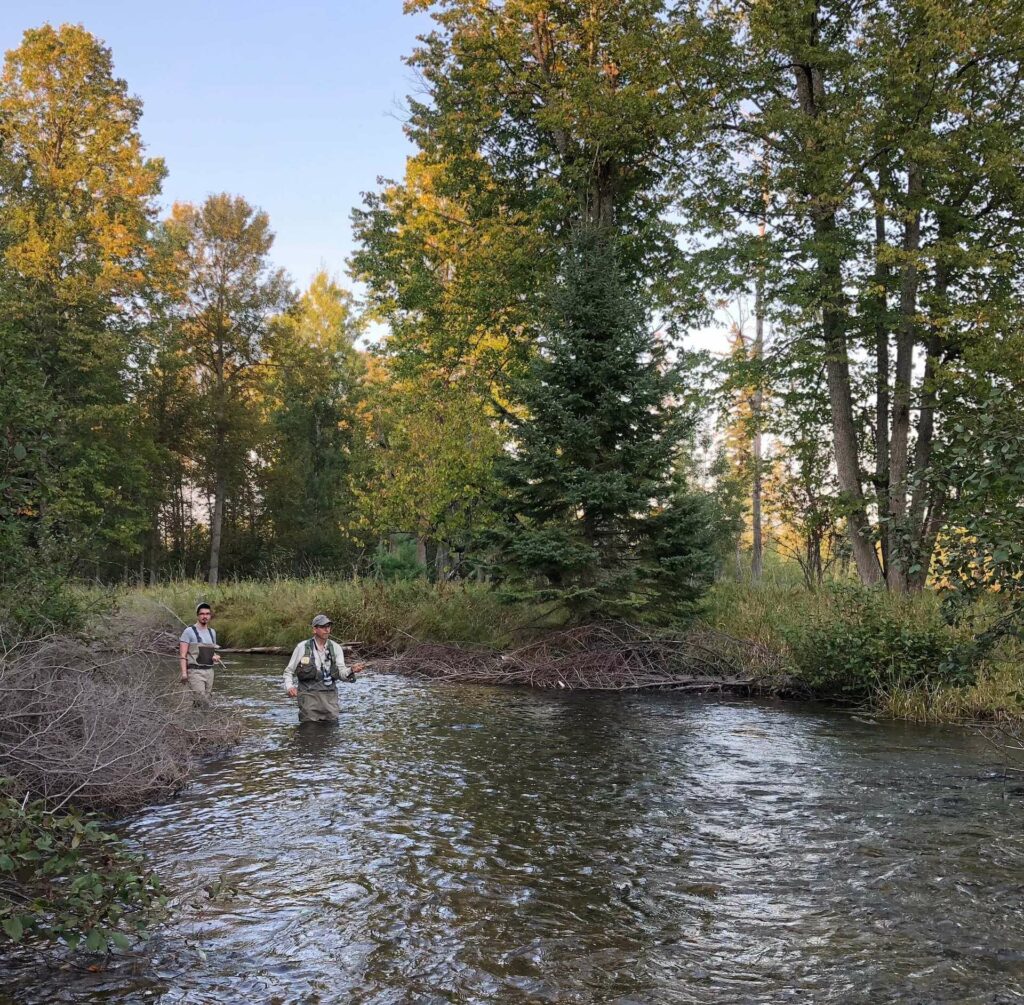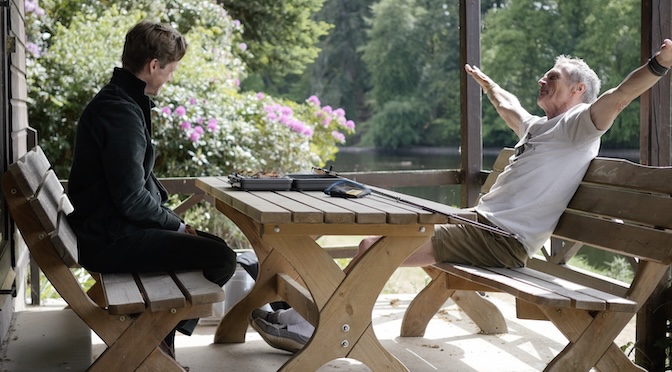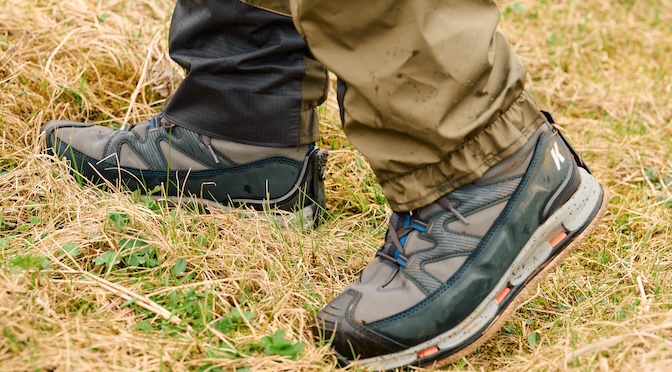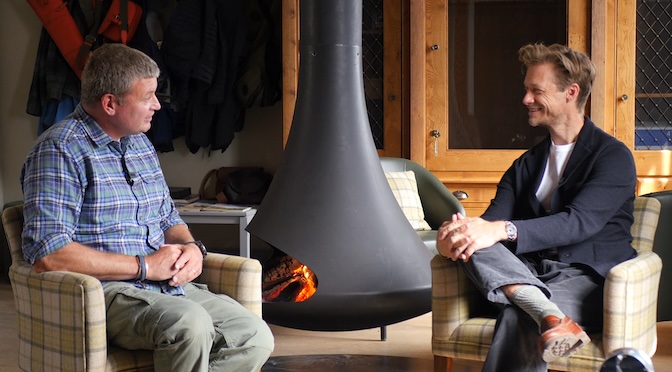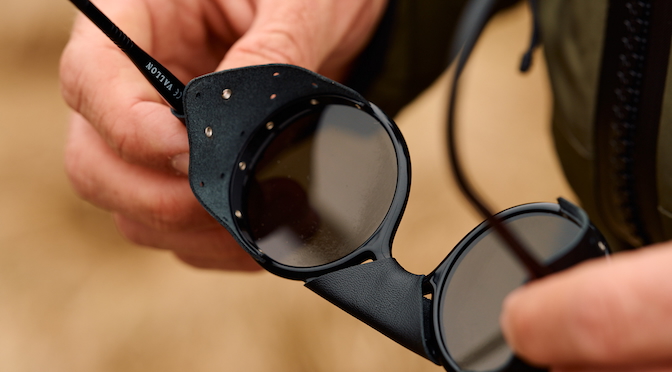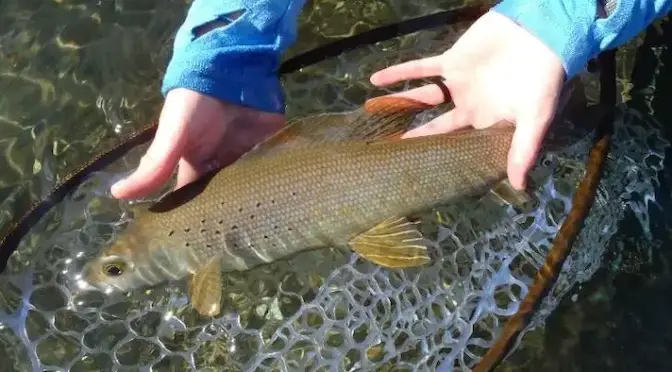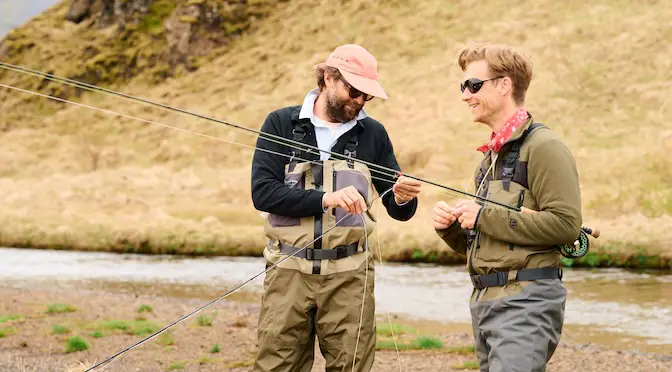Last updated on January 9th, 2024.
- Fly Fishing Steelhead: A How To Guide - February 17, 2023
- Brown Trout in the Outer Hebrides – South Uist Fishing - July 19, 2022
- Fishing Camp – Looking for Kamloops Trout - December 26, 2019
Many of Ernest Hemingway’s Nick Adams short stories are set in upper Michigan or refer to it. Hemingway spent his boyhood summers at Walloon Lake.
He lived in Horton Bay as a struggling young writer and was married in the town’s Methodist Church. He learned to fish in Horton Creek and took camping trips nearby to the Sturgeon and the Black Rivers.
— “This is the way forests were in the olden days. This is about the last good country there is left.” Ernest Hemingway, The Last Good Country —
Getting to Ernest Hemingway Fishing Country
In early September, my son, a friend and I travelled to Horton Bay, Michigan to see the ground and fish the rivers. It was fall and the leaves were just starting to turn red. Hunters patrolled the backroads with hound dogs in their pickups searching for bear.

We stayed upstairs at the Horton Bay General Store. It’s thought to be the model for the general store in Hemingway’s short story The Last Good Country. It looks the same today as it did in Hemingway’s time: a high false storefront outside and a sprawling interior with a huge bar over which you can buy everything from ice cream to whiskey to pastries to goat cheese to a sack of nails.

Horton Creek
We spent a frustrating afternoon fishing Horton Creek. Hemingway learned to fish in Horton Creek. There are several pictures of Hemingway with Horton Creek brook trout. His character Nick Adams muses about fishing the creek after a rain in one of the Nick Adams stories. We struck out. The creek’s wadeable water below town is private property and off limits to fishing.
In the Nick Adams Preserve above town, the creek’s marl bottom is unwadeable, the water is gin-clear and the fish are skittish. Brush along the steam and low hanging branches make casting very difficult. I had fish turn away from a size 16 Adams and a size 18 Black Ant and spooked several others while trying to get into position to cast.
The next day we drove an hour east of Horton Bay to the Black River. The Black was a Hemingway favorite. Its amber colored water flows through the Pigeon State forest. It’s the largest contiguous block or wild country on the Lower Peninsula. The Black River bends and deadfalls shelter wild brook trout.
The public access points on the Black have evocative names like Green’s Landing, McKinnon Bend, Tin Shanty Bridge, Chandler Dam Road, The Stairs, Hardwood Creek and Crockett Rapids. The upper black is brushy and hard to wade with a deep mud and sand bottom. The banks are more open and the river bottom is more rocky the farther downstream you go. We found brook trout below Tin Shanty Bridge on the upper Black (a favorite Hemingway stretch) but it was very brushy.
A Little More Successful…
We did better in an open stretch of the Black along Chandler Dam Road (another Hemingway camping spot) catching brook trout of 6-12 inches fishing size 12 Letort Hoppers and size 14 yellow humpies.

We completed our trip with a hike to the Hardwood Creek stretch of the Black. The Hardwood Creek water requires a walk on a deserted two-lane track through forest and a meadow towards the ravine which holds the river.
The woods near the river made me think of the conversation Nick Adams and his sister had while hiking deep into the forest to avoid the game wardens who want to arrest Nick for poaching trout.
“Did you ever come here with anyone else?”
“No. Only by myself.”
“And you weren’t afraid.”
“No. But I always feel strange. Like the way I ought to feel in church.”
Ernest Hemingway, The Last Good Country
Hemingway used a Bamboo Hardy Fairy fly rod and a Hardy St George Reel but he didn’t fish dry flies. “Papa was a pretty straightforward wet-fly fisherman,” his son Jack says in Misadventures of a Fly Fisherman. “Ninety percent of the time, Papa was an across and downstream caster whose team of flies swam or skittered across the current…” Hemingway liked to fish the McGinty wet fly, a colorful bee imitation listed in Mary Orvis Marbury’s Favorite Flies and Their Histories.

Favorite Flies for Fishing Hemingway Country
Hook: #8-14 Heavy wire wet fly hook (or else the fly will skate).
Tail: Red hen hackle.
Body: Small yellow and black chenille wound together.
Hackle: Brown or furnace hackle.
Wing: White tipped mallard blues.
Thread: Black
We found some riffles in the Hardwood Creek stretch of the Black suitable for a downstream wet fly swum Hemingway fashion across the current. Hemingway’s description of a book trout caught by Nick Adams in The Last Good Country says it all: “He was strong and heavy in Nick’s hands and he had a pleasant smell and Nick saw how dark his back was and how brilliant his spots were colored and how bright the edges of his fins were. They were white on the edge with a black line behind…”
Time passed quickly. This won’t be our last trip to the last good country.
Reading list:
Ernest Hemingway – Nick Adam’s Stories
In Search of Hemingway’s Meadow: A Return to the Big Two-Hearted River
Ernest Hemingway: Hemingway on Fishing
Where to stay: Check out Hotel Walloon’s special fly fishing package
Notice: We take part in the Amazon Associates Program and earn a small commission at no extra cost for you if you end up making a purchase. We only recommend products we are convinced of and use ourselves.

